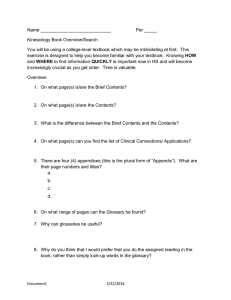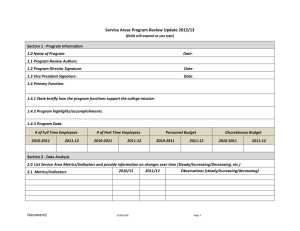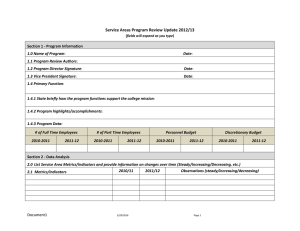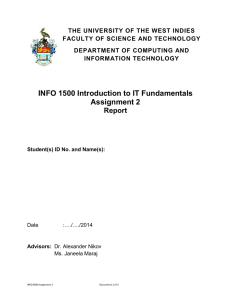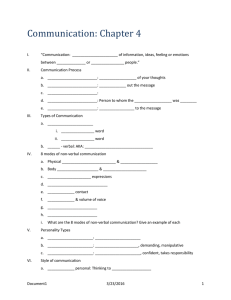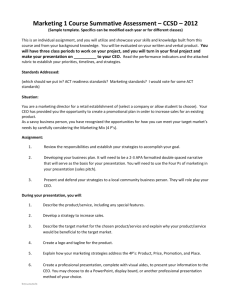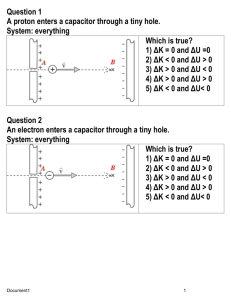Chapter 3 Study Guide
advertisement
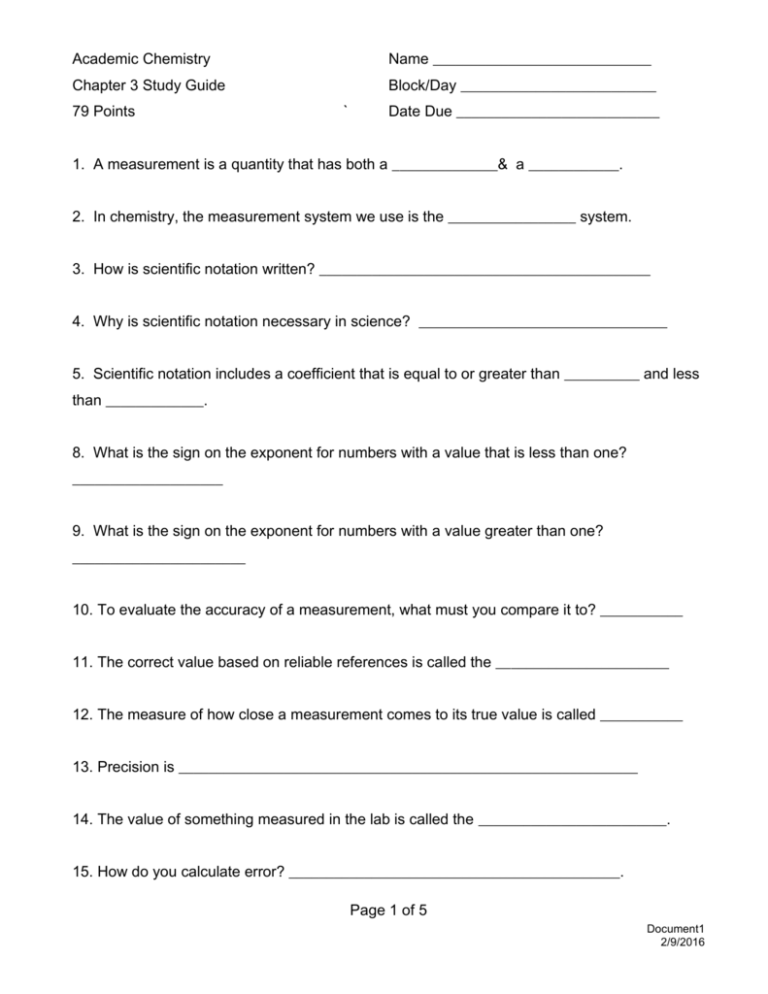
Academic Chemistry Name _____________________________ Chapter 3 Study Guide Block/Day __________________________ 79 Points ` Date Due ___________________________ 1. A measurement is a quantity that has both a ______________& a ____________. 2. In chemistry, the measurement system we use is the _________________ system. 3. How is scientific notation written? ____________________________________________ 4. Why is scientific notation necessary in science? _________________________________ 5. Scientific notation includes a coefficient that is equal to or greater than __________ and less than _____________. 8. What is the sign on the exponent for numbers with a value that is less than one? ____________________ 9. What is the sign on the exponent for numbers with a value greater than one? _______________________ 10. To evaluate the accuracy of a measurement, what must you compare it to? ___________ 11. The correct value based on reliable references is called the _______________________ 12. The measure of how close a measurement comes to its true value is called ___________ 13. Precision is _____________________________________________________________ 14. The value of something measured in the lab is called the _________________________. 15. How do you calculate error? ____________________________________________. Page 1 of 5 Document1 2/9/2016 16. How do you calculate the percent error? ____________________________________. 17. Measurements that report all certain digits and one estimated digit are called _______________________________________________ LIST THE FOLLOWING RULES THAT DETERMINE THAT A DIGIT IS SIGNIFICANT 18. Non-zero digits ___________________________________________________________ _________________________________________________________Example __________ 19. “ Sandwiched” zeros ________________________________________________________ _________________________________________________________ Example __________ 20. Zeros to the left ___________________________________________________________ _________________________________________________________Example __________ 21. Zeros to the right _________________________________________________________ __________________________________________________________Example __________ 22. Conversion factors, counting numbers and precisely defined quantities (constants i.e. the speed of light) _______________________________________________________________ __________________________________________________________Example __________ 23. The answer cannot be _________________ than the least precise measurement used in the calculations. 24. To place your answer in the correct number of significant figures you ______________. 25. To "round off" a number, you must first decide ________________________________. Page 2 of 5 Document1 2/9/2016 26. After deciding how many significant figures your answer should have, going from left to right, if the first number you discard is less than 5, you should _______________________. 27. After deciding how many significant figures your answer should have, going from left to right, if the first number you discard is greater than 5, you should ____________________. 28. When adding and subtracting, your final answer should be rounded to ________________________________________________________________________ ________________________________________________________________________. 29. In multiplication and division, your final answer should be rounded to ______________ ________________________________________________________________________ 30. When making measurements, it is important to assign the correct _________________. 31. All SI units are based on the number ________________________________________. 32. What is the origin (predecessor) of the SI System? _____________________________. NAME THE SEVEN "SI" BASE UNITS AND WHAT THEY MEASURE 33. ___________________________________ 34.________________________________ 35. ___________________________________ 36. _______________________________ 37.___________________________________ 38. ________________________________ 39. __________________________________ 40. Place a star beside the five base units commonly used by chemists. Page 3 of 5 Document1 2/9/2016 41. Weight is defined as ______________________________________________________________ 42. Mass is defined as _______________________________________________________________ 43. The basic SI unit for mass is the ___________________________________________. 44. What instrument is used to determine mass? _________________________________. 45. The relationship between an object's mass and its volume is called _______________. 46. What is temperature? ___________________________________________________. 47. What does the temperature of an object determine? ___________________________. 48. The two equivalent units of temperature are degrees ___________________ and the ________________________. 49. The Celsius temperature scale sets freezing temperature of water at ______________ and the boiling temperature of water at ________________. 50. The Kelvin temperature scale sets the freezing temperature of water at ____________ and the boiling temperature of water at ________________. 51., What is meant by the term absolute zero? ___________________________________ 52. The units of energy are the _________________________ and the ______________________. Circle the unit that is part of the SI System. 53. A ____________________ _________________ is a ratio of equivalent measurements. 54. Give an example of a conversion factor. _____________________________________ Page 4 of 5 Document1 2/9/2016 55. When a measurement is multiplied by a ___________________ ______________ the numerical value is generally ___________________, but the actual size of the quantity measured remains the _________________. 56. ______________________ _________________ is a way to analyze and solve problems. 57. Problems in which a measurement with one unit is converted to an equivalent measurement with another unit are easily solved using ___________________ _____________________. 58. Qualitative measurements state results in the form of __________________________. 59. Quantitative measurements state results in the form of _________________________. 60. Density is a(n) ______________________ ____________________ that depends only on the composition of a substance, not the size of the sample. 61. What is the formula for density? ___________________________________________ 62. the density of a substance generally ___________________________ as its ____________________________ increases. Page 5 of 5 Document1 2/9/2016
